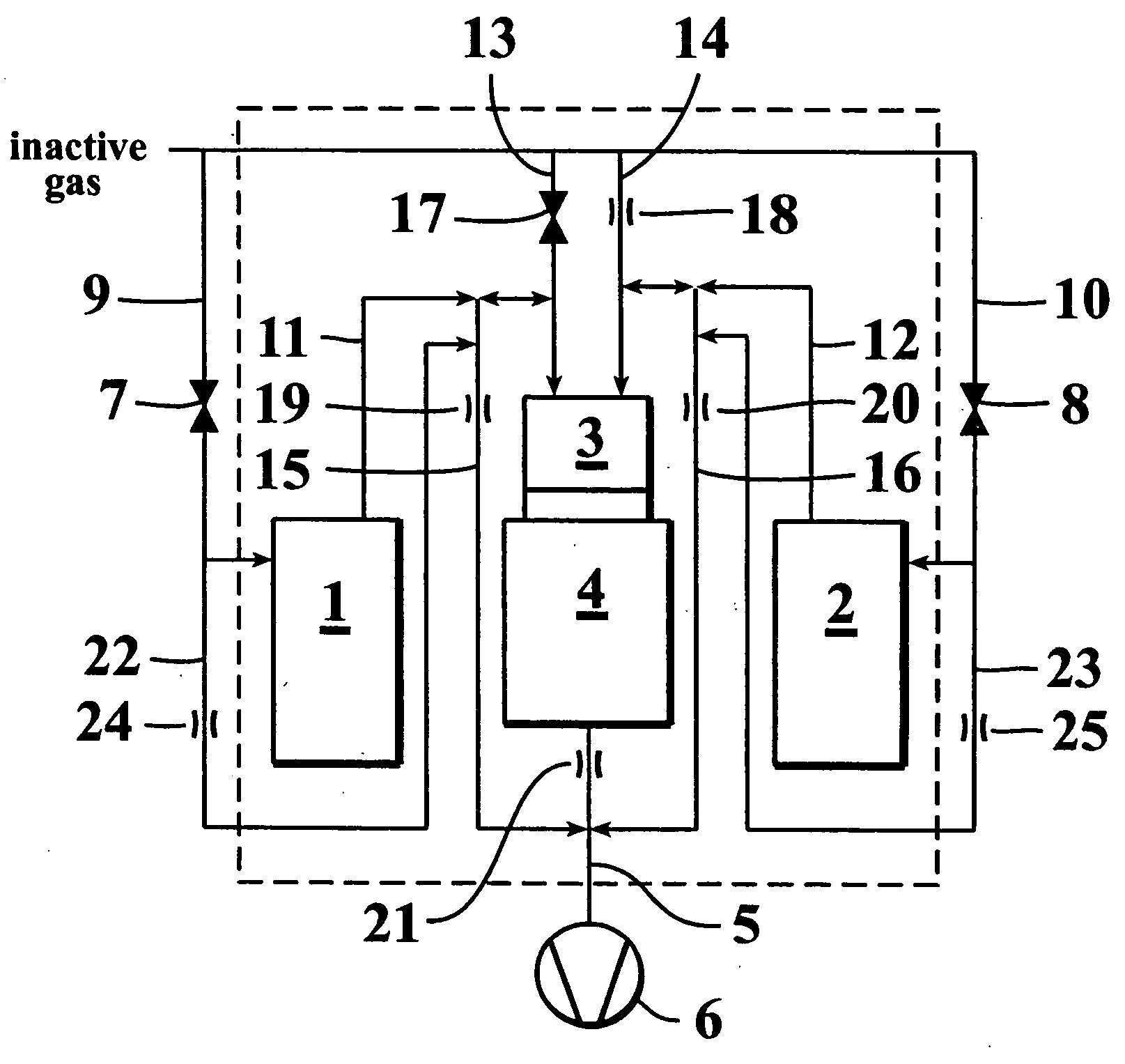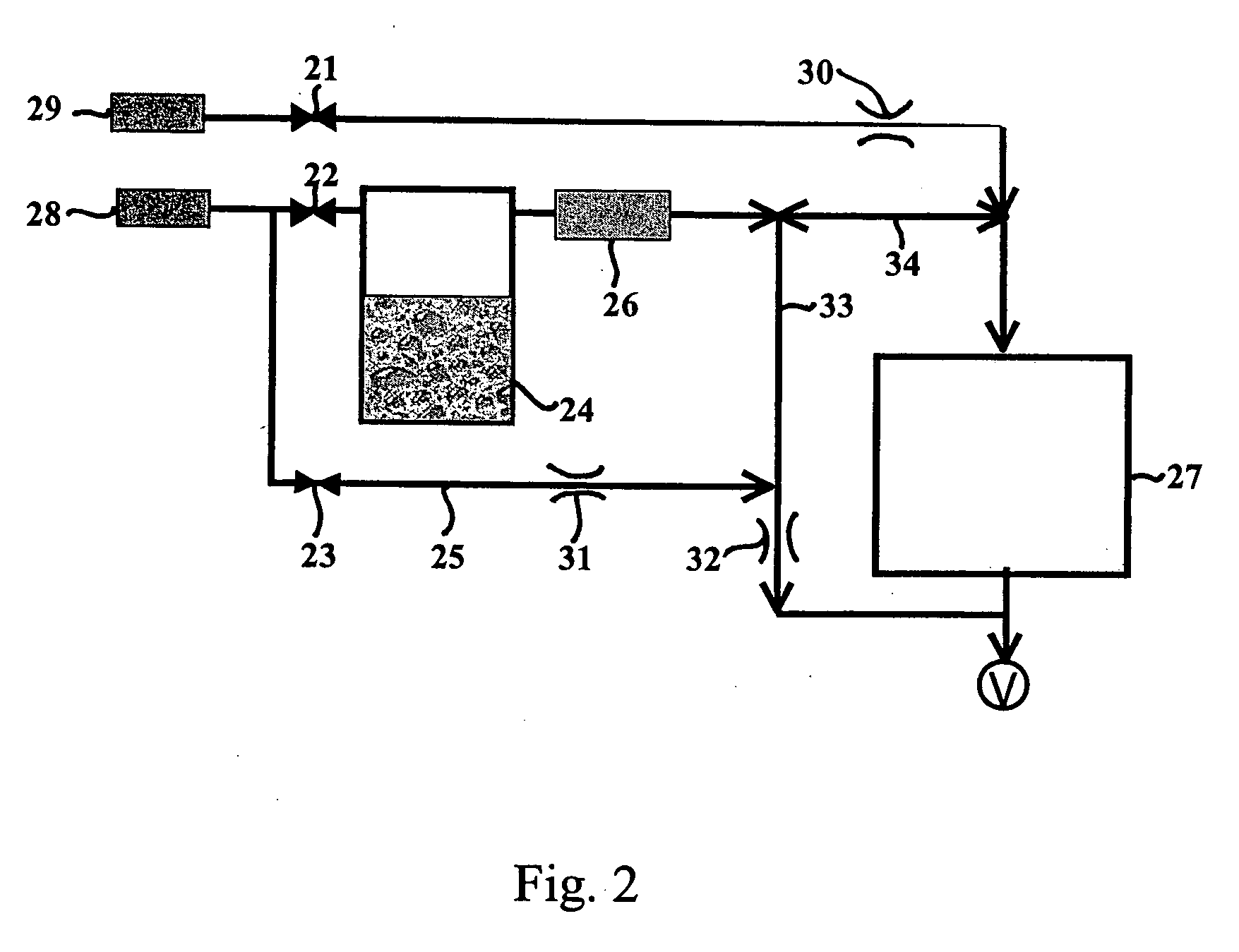Method of growing a thin film onto a substrate
a technology of thin film and substrate, which is applied in the direction of crystal growth process, chemically reactive gas, pressurized chemical process, etc., can solve the problems of reducing the risk of microparticle formation already in the infeed line, affecting generally having a deteriorating effect on the quality of the deposited thin film, so as to reduce the risk of particles and droplets absorbed in the purifier being released therefrom, the risk of investment cost and the need of maintenan
- Summary
- Abstract
- Description
- Claims
- Application Information
AI Technical Summary
Benefits of technology
Problems solved by technology
Method used
Image
Examples
Embodiment Construction
[0059] A process configuration according to the present invention was tested by building an ALD processing unit using pipes having a diameter of 1 / 4 inches (about 6 mm) and comprising conduits
[0060] 1) for connecting the reactant source with the reactor (the "first conduit"),
[0061] 2) for introducing inactive gas into the connection pipe (the "second conduit") and
[0062] 3) for withdrawing inactive gas from the connection pipe (the "third conduit").
[0063] The third conduit was connected to the first conduit at a distance of about 10 cm from the connection point of the second conduit. In the following, the portion of the first conduit extending between these two connection point is called the "barrier zone" or "barrier portion." A porous filter layer was incorporated into the first conduit between the reactant source and the connection point of the third conduit. The reactant sources tested comprised various solid and liquid precursors which were conducted with a carrier gas from the ...
PUM
| Property | Measurement | Unit |
|---|---|---|
| temperature | aaaaa | aaaaa |
| pressure | aaaaa | aaaaa |
| pressure | aaaaa | aaaaa |
Abstract
Description
Claims
Application Information
 Login to View More
Login to View More - R&D
- Intellectual Property
- Life Sciences
- Materials
- Tech Scout
- Unparalleled Data Quality
- Higher Quality Content
- 60% Fewer Hallucinations
Browse by: Latest US Patents, China's latest patents, Technical Efficacy Thesaurus, Application Domain, Technology Topic, Popular Technical Reports.
© 2025 PatSnap. All rights reserved.Legal|Privacy policy|Modern Slavery Act Transparency Statement|Sitemap|About US| Contact US: help@patsnap.com



